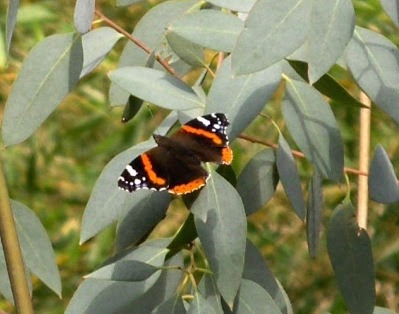If your talking about distilling it's a separation method based on different boiling points. In the dutch language 'distilleren' means distilling alcohol. To also get acquainted with distilling I have followed a course during the past few weeks given by Pieter Rijneveel in Dordrecht.
Pieter has a distillery http://www.slijterij-vwk.nl/ and according to traditional methods he distills with a single-walled copper kettle. During one evening we visited a distillery of van Toorn in Vlaardingen
The photo above is a still from the distillery. Distiller Leo Fontijne gives some explanation about the production process of liqueur, genever, brandewijn and advocaat. He is the only producer of 'schelvispekel'. See the website http://www.schelvispekel.nl/
In addition to theory there was also room for making liquor. I got a jerry can, yeast, a bag of sugar and a water lock . The intention was to ferment a sugar solution for 3 to 4 weeks and and distill the alcohol off.
 |
| fermentation of sugar solution |
Here is the recipe for fermentation, including:
1 kg sugar in 1 liter water and simmer for 5 minutes
dissolve the sugar water to a total volume of 5 liters in a fermentation tank, then let cool
Take about a half liter of solution and solve 1 gramof yeast and a crushed vitamin C tablet in it.Bring this mixture back into the fermentation tank and end it with an airlock.
Shake the tank daily.
 |
| equation for the fermentation |
 |
| ethanol model |
A few weeks later the sugar solution, now about 10% fermented into alcohol, could be brought into the still. This is the smallest still Pieter has and is made from parts of a central heating boiler.
In the proces of distilling alcohol a good cooling and separation of water and alcohol is important. The separation of the alcohol and water is made possible by a vertical column filled with marbles.
 |
| top of the still |
After this separation column and the thermometer are some water coolers that make that alcohol vapor is condensed well.
After some 20 liters of fermented sugar is transported in the still Pieter closes the boiler off and closes the cracks with a paste of flour and water.
Then the gas burner under the boiler is lit. After about half hour, the first distillate from the condenser drips into a beaker. Of course we throw the first 200 mL of distillate away because of traces of methanol in it.

The essential oil in the peel with cinnamon and cloves maak sure we get a good taste of the liqueur. The sugar content of the liquor is achieved by 1 kg of sugar to 1 liter to resolve.
To make a good liquor we have 1 liter sugar 1 liter water, 1 liter of alcohol plus the orange rind and cinnamon cloves needed. This mixture must be left at least for 4 days to extract and then filter and divide into bottles. The result: an orange liqueur with an alcohol content of about 33% and 25% sugar content.

In total, there are 2.5 liters orange liqueur made. Enough to get some bottles to give away for Christmas. I have not yet had any comments from people who have tasted the liqueur.
When I poured the liquor in smaller bottles it smelled very good! Do you want to know more about where liquor and beverages in general are produced click on this link:






































































